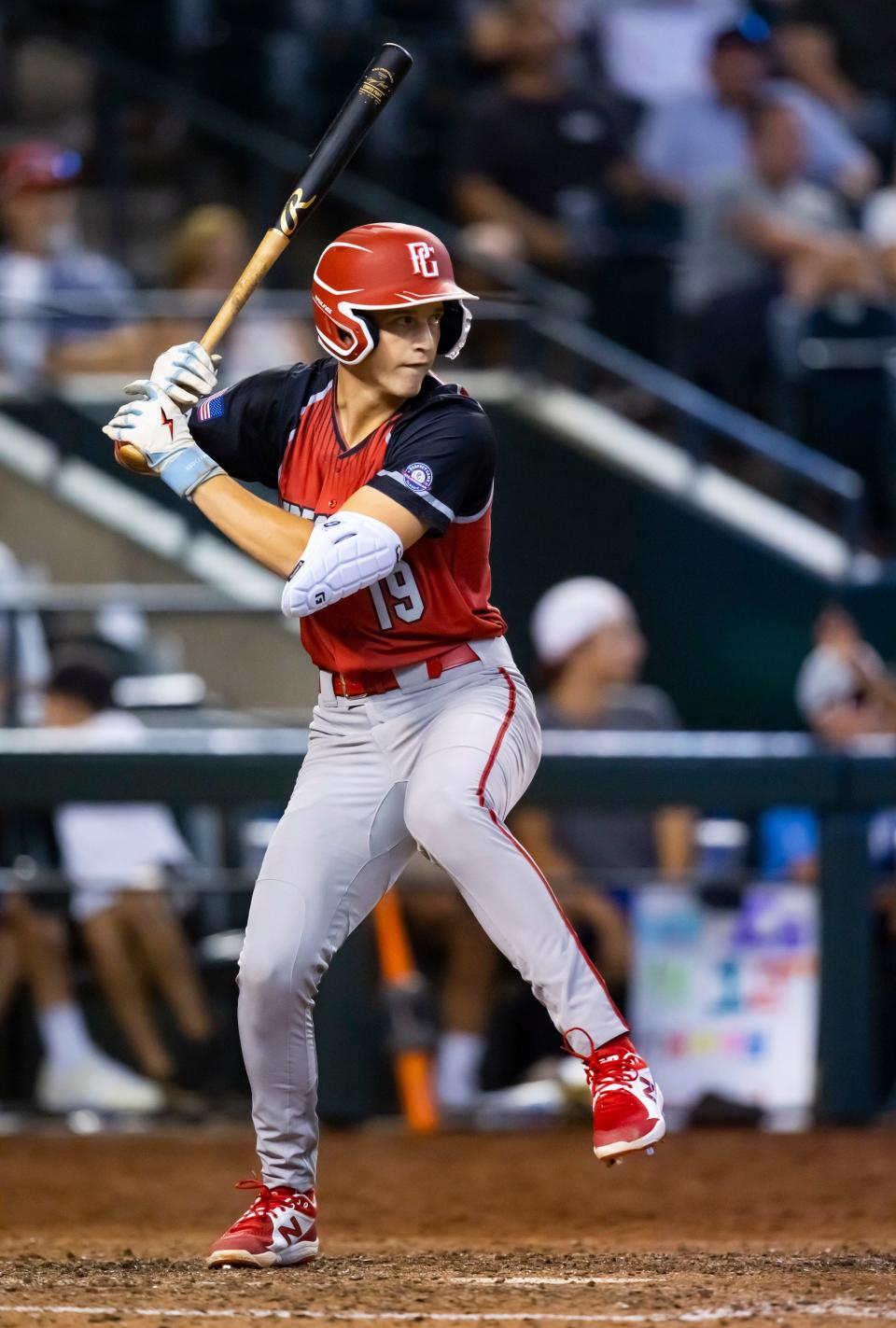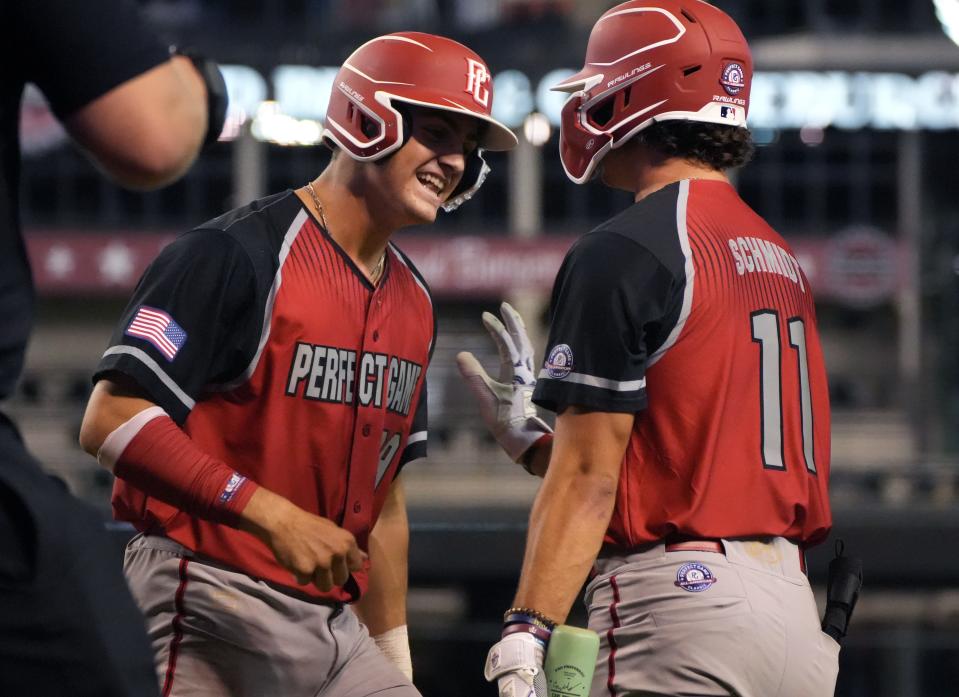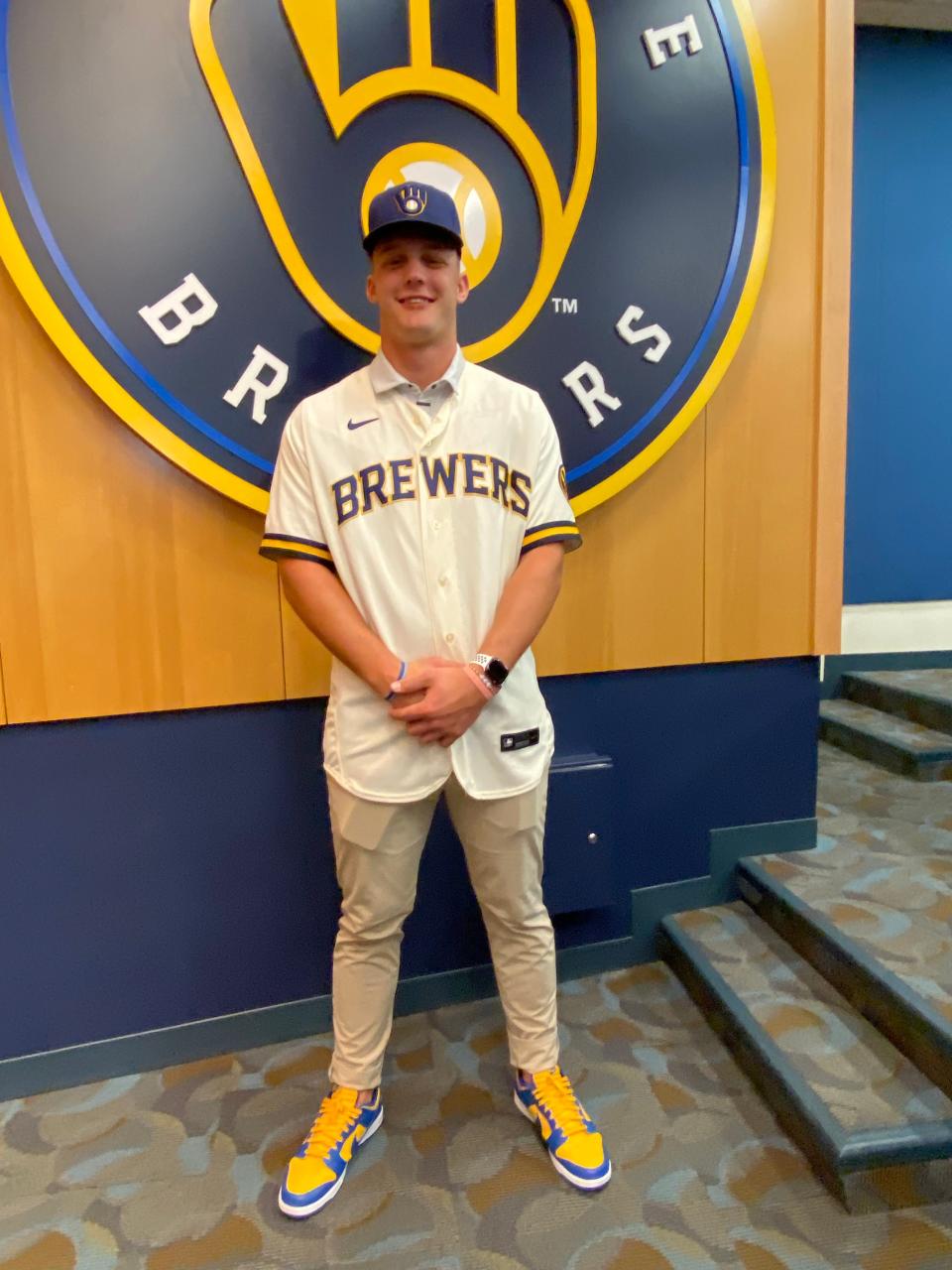Why do scouts love this Brewers draft class (and specifically Cooper Pratt)?
Through the first five rounds of the MLB draft last month, industry consensus was that the Milwaukee Brewers had fared pretty well.
With their first two picks, the Brewers selected high-upside players with an elite tool in at least one category. Brock Wilken, the Brewers first-rounder, was arguably the best power bat in the draft. Josh Knoth, taken about a dozen picks later, was a top high school arm with the best breaking ball of any prep pitcher.
In the second round, Milwaukee took a small-school, high-contact data darling – an archetype that has fared well for them in the past. High-school infielder Eric Bitonti, considered by many to be a top-50 prospect, fell in the draft due to signability concerns.
Those four players on their own were considered enough to set the Brewers up well for the future.
Then, they snagged Cooper Pratt.

Is Cooper Pratt the gem of the draft class?
Depending on whom you ask, Pratt may or may not have been the gem of the Brewers’ draft class.
What isn’t up for debate is that with his pick, the class went from simply good to knock-your-socks-off stellar.
“The depth and quality of this class is pretty exceptional, in my opinion,” said Eric Longenhagen, a writer for popular baseball statistics website Fangraphs. “I thought they did well on Day 1, then bolstered it with some different profiles early Day 2. Then you top it off with Pratt, who I had a $3 million valuation on. And they got him for $1.5 million, give or take ($1.35 million).”
It may seem, on its face, foolhardy to declare a sixth-round selection the needle-mover that puts a team’s draft haul over the top. But not in baseball.
Major League Baseball's "slot" system makes it difficult to simply view a draft in linear terms, unlike in other pro sports in which players are usually taken in order of perceived talent. Each team has a pool of money it can dole out to prospects in the first 10 rounds, and that can create a jigsaw puzzle in which players are given bigger bonuses than players taken earlier.
Pratt, according to Longenhagen on Fangraphs, was the 25th-best prospect in the draft. The Athletic ranked him 40th, and MLB Pipeline had him 45th. If other teams had been certain they could sign Pratt, he likely would've been snatched away at some point in the second round.
Jared Sandler, Pratt’s travel ball coach at BPA Baseball, indicated many teams stayed away from taking Pratt because they didn't think they could sign him away from his commitment to Ole Miss.
The Brewers, having saved money over the first five rounds and able to offer over-slot money in the sixth, likely had a pool of high school players they were targeting with that pick.
Chris McMinn, Pratt's high-school coach at Magnolia Heights in Senatobia, Mississippi, estimated that Brewers scouting supervisor Scott Nichols attended a dozen of Pratt's games this spring. The franchise had a relationship and confidence it could ink Pratt for a bonus in the range of $1-2 million.
“I don’t want to say it was a total surprise but as you’re going through it and talking to teams nobody wants to show their hand on either side,” Sandler said. “Obviously, the players want to get as much money as they can and the organizations want to know what’s the least amount of money they can pay to get you. But (Pratt) always felt the Brewers had seen him a lot and liked him, and it was an organization he had the chance to go to.”
In the end, the Brewers were able to sign Pratt for $1.35 million, which was well over the assigned slot value of $309,900 but still all things considered good value for one of the best prep hitters in the class.

What’s Pratt’s greatest asset as a baseball player?
There are differing opinions on what it is that Pratt does best.
For McMinn, it’s the slickness on defense.
“His hands are really, really good,” McMinn said. “From the time he was a young age, he could always defend at shortstop. He’s always been one of the best defenders you will see.”
Sandler took note of Pratt’s steady heartbeat and demeanor.
“What I think is the hardest part about baseball is the ability to be the same guy every day,” he said. “I really think that’s where Coop’s at his best. That’s his standout tool – the ability to be the same guy and play, every day. That’s why he has a chance at a really long big-league career.”
Pratt lives and breathes baseball. He always has. He comes from a family of ballplayers; his father and four uncles played college baseball, including four at the Division I level, his mother played college softball and his older brother, Ozzie, is a shortstop at Southern Miss.
In high school, he would have class until 2 p.m. or so, then go to the weight room or his team’s practice. Twice a week, he would do a two-hour roundtrip drive to Tennessee to work out with a strength coach, then come back and hit and take ground balls every night near Oxford.
When Magnolia Heights won a state title Pratt's junior season, he didn't get home following a long bus ride until 2 a.m. He had a practice for his club team the next morning at 10 a.m. McMinn's son was on the same team and by the time he arrived, Pratt had already worked up a heavy lather.
He had gotten to the field at 8:30 to take grounders.
“This was every day,” McMinn said of Pratt's routine. “This wasn’t just during baseball season or during the offseason. It was never a fight to get him to do this. This is what he wanted to do.”
But for as valuable as those skills and traits are, it’s hard to look past two other characteristics: Pratt’s contact ability and frame.
“The ability to make his rate of contact and have body projection, that’s the foundation,” Longenhagen said. “If I could pick one or two things to put on a high-school hitting prospect, those are the two things.”
Cooper Pratt’s hit tool has a chance to be elite
Between 2021 and 2022, Pratt saw 581 pitches on the national showcase circuit that were tracked on tape. He put 113 in play and swung and missed only 27 times.
That’s a ratio of balls in play to whiff of more than 4:1 against the strongest level of pitching any high school hitter in the country will see. For reference, Pittsburgh Pirates 2022 first-rounder Termarr Johnson, who some scouting services have tagged with a 70-grade hit tool, had a 3:2 ratio on the same showcase circuit.
“As a hitter, he’s very versatile,” Sandler said. “He handles velo, he uses all fields, he adjusts to the breaking ball. At a young age, he understood that every at-bat, every swing isn’t the same one. There’s different situations, different counts, different types of pitchers. You have to have a different approach.”
If Pratt fills out his frame from where it now stands at 6-foot-4 and 195 pounds, the added strength could make him a power threat who hits 15 to 20 homers.
“It’s just much easier to envision someone who’s built like Cooper Pratt adding strength and power than it is to envision someone who already has power becoming a better hitter,” Longenhagen said. “This guy has a skill and size in place already that comprises the foundation of most young, good hitting prospects.”

The entire 2023 class is an exciting one for Milwaukee
The Brewers’ draft left evaluators from around the industry raving.
Landing Pratt and Bitonti after already making some highly lauded selections in the first two rounds? You’d be hard-pressed to find a draft expert who didn’t come away impressed.
“When you’ve got that bonus space cleared with two high upside guys in hand like the Brewers did early, you’ll be able to land at least one more big fish on an over-slot deal,” Longenhagen said. “The fact that they got two was surprising.”
The draft haul all began with Wilken at the 18th selection. The Wake Forest third baseman hit 71 home runs across his three seasons with the Demon Deacons and was regarded by some scouts as the best pure power hitter in the entire draft.
Milwaukee struck a verbal agreement on a signing bonus with Wilken prior to selecting him and saved nearly $1 million under-slot.
In nabbing Knoth at pick No. 33, the Brewers got another under-slot player with major upside thanks in large part to an elite curveball.
“I had him as the second or third high school arm on my board," Longenhagen said. "Just that prototypical riding fastball, monster vertical breaking ball. Every bit of the plus athlete at his size. It’s a premium arm and an athlete with a real ability to spin it. It’s what all the Astros arms looked like at a certain point.
“It’s spin talent that you hope you can parlay into a second plus-breaking ball and then bam, that’s all you need.”
In a similar vein to past early selections such as Tyler Black, Jacob Misiorowski, Logan Henderson and Dylan O’Rae, Milwaukee then dipped into a small, under-scouted school or location and plucked Mike Boeve, who homered in his first at-bat with Class A Wisconsin on Wednesday.
“They do this every year,” Longenhagen said. “They love their junior college pitchers. They love their undervalued small school contact hitters. And it kind of works out.”
Would you care to see Mike Boeve and Brock Wilken go back-to-back for the Timber Rattlers? pic.twitter.com/2piGxZL8Db
— Curt Hogg (@CyrtHogg) August 10, 2023
Bitonti, the first of the two high-profile prep bats nabbed by the Brewers is the exact type of player that teams’ draft models love – a 17 year old with prodigious power and mammoth exit velocities.
“There are enough high-end, high-upside lotto tickets in this class that they’ve mitigated risk and it’s likely that a couple of them are going to hit,” Longenhagen said.
Then came Pratt, the last of the big-five picks even though he was the one some scouting outlets had as the highest-ranked of the entire group.
“Within the next four years, he could be the starting shortstop in Milwaukee,” McMinn said. “The upside potential is through the roof. He’s going to be 6-4, 220 pounds and can carry it. He’s a good runner for his size, the arm plays. The feel for the game is there. The power will be there. There’s a lot of upside to him.
“I think that’s his goal, too. He wants to be the starting shortstop in Milwaukee. And knowing Cooper for as long as I have, I have not seen him not reach a goal that he had for himself.”
THANK YOU: Subscribers' support makes this work possible. Help us share the knowledge by buying a gift subscription.
DOWNLOAD THE APP: Get the latest news, sports and more
This article originally appeared on Milwaukee Journal Sentinel: Why scouts love Brewers' MLB draft class, especially Cooper Pratt

